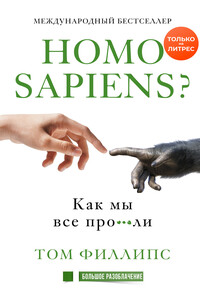23 Henrich, J., & McElreath, R. (2002). Are peasants riskaverse decision makers? // Current Anthropology, 43 (1), 172–181.
24 При контроле всех других измеряемых переменных. Cameron, L., Erkal, N., Gangadharan, L., & Meng, X. (2013). Little emperors: Behavioral impacts of China’s onechild policy // Science, 339 (6122), 953–957.
25 Gneezy, U., Leonard, K. L., & List, J. A. (2009). Gender differences in competition: Evidence from a matrilineal and a patriarchal society // Econometrica, 77 (5), 1637–1664. В этих исследованиях использовались нетривиальные ставки.
26 Gong, B., & Yang, C.-L. (2012). Gender differences in risk attitudes: Field experiments on the matrilineal Mosuo and the patriarchal Yi // Journal of Economic Behavior and Organization, 83 (1), 59–65.
27 Cardenas, J.-C., Dreber, A., von Essen, E., & Ranehill, E. (2012). Gender differences in competitiveness and risk taking: Comparing children in Colombia and Sweden // Journal of Economic Behavior and Organization, 83 (1), 11–23.
28 Booth, A., & Nolen, P. (2012). Gender differences in risk behaviour: Does nurture matter? // Economic Journal, 122 (558), F56 – F78; Booth, A., Cardona– Sosa, L., & Nolen, P. (2014). Gender differences in risk aversion: Do singlesex environments affect their development? // Journal of Economic Behavior and Organization, 99, 126–154.
29 Порой экономисты определяют задачи на “риск” как ситуации, в которых вероятность выгоды известна, и используют “неопределенность” для описания ситуаций, в которых вероятности неизвестны. Однако здесь этому правилу не следуют.
3 °Cross, C. P., Copping, L. T., & Campbell, A. (2011). Sex differences in impulsivity: A meta-analysis // Psychological Bulletin, 137 (1), 97–130. Размер эффекта (d = 0,36).
31 Cross et al. (2011), там же. Размер эффекта d = –0,34. Авторы предполагают, что женщины более склонны выбирать колоды с высоким риском из-за большей чувствительности к наказанию. Однако колоды с большим и малым риском в целом уравнены по вознаграждению и наказанию.
32 Holt, C. A., & Laury, S. K. (2002). Risk aversion and incentive effects // American Economic Review, 92 (5), 1644–1655. См. также: Harbaugh, W., Krause, K., & Vesterlund, L. (2002). Risk attitudes of children and adults: Choices over small and large probability gains and losses // Experimental Economics, 5 (1), 53–84. В этом исследовании были представлены участники в возрасте от 5 до 64 лет. Они играли на “реальные и ощутимые ставки” (с. 55). Авторы указывают: “В то время как многие другие исследователи обнаружили, что мужчины меньше избегают риска, чем женщины, при данном алгоритме действий мы не нашли подтверждений гендерных различий в рискованном поведении или во взвешивании вероятностей ни у детей, ни у взрослых”. Цит. на с. 66, сноска убрана.
33 Henrich & McElreath (2002), там же. Цит. на с. 175 и 176 соответственно.
34 Akerlof, G. A., & Kranton, R. E. (2000). Economics andidentity // Quarterly Journal of Economics, 115 (3), 715–753.
35 Akerlof, G. A., & Kranton, R. E. (2010). Identity economics: How our identities shape our work, wages, and well-being. Princeton, NJ: Princeton University Press. Цит. на с. 10.
36 Akerloff & Kranton (2010), там же. Цит. на с. 6.
37 Например, Nguyen, H., & Ryan, A. (2008). Does stereotype threat affect test performance of minorities and women? A meta-analysis of experimental evidence // Journal of Applied Psychology, 93 (6), 1314–1334. Более скептический вывод с учетом величины эффекта угрозы подтверждения стереотипа, см.: Stoet, G., & Geary, D. C. (2012). Can stereotype threat explain the gender gap in mathematics performance and achievement? // Review of General Psychology, 16 (1), 93–102.
38 Carr, P. B., & Steele, C. M. (2010). Stereotype threat affects financial decision making // Psychological Science, 21 (10), 1411–1416.
39 Brooks, A. W., Huang, L. Kearney, S. W., & Murray, F. E. (2014). Investors prefer entrepreneurial ventures pitched by attractive men // Proceedings of the National Academy of Sciences, 111 (12), 4427–4431.



